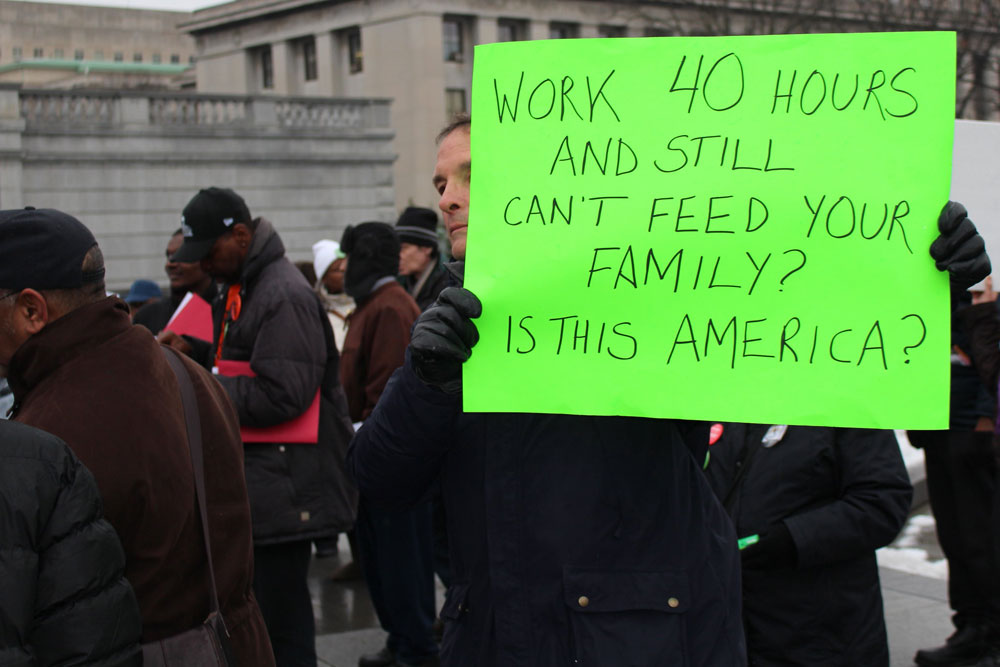
January 29, 2020; The Patch
A human resources survey conducted by Community Bridges, in partnership with the Volunteer Center of Santa Cruz County and the Human Care Alliance of Santa Cruz County (HCA), gives us reason to revisit how nonprofit personnel are faring in a growing economy with historically low unemployment.
From some perspectives, these are good times. A year ago, NPQ’s Steve Dubb took a look at the findings of the 2019 Nonprofit Employment Report published by Johns Hopkins University’s Center for Civil Society, which found that overall employment in the nonprofit sector was large and growing faster than in for-profit counterparts. Most critically, salaries were higher in the nonprofit sector than they were in similar for-profit organizations.
The HCA’s survey was more limited in scope, covering those in the nonprofit sector who have historically received lower salaries—people in the fields of healthcare and direct services. Even in a tight job market, almost 40 percent of the employees surveyed earn less than California’s minimum wage of $15/hour, slated to take effect next year, an hourly rate often considered as the threshold minimum of a livable wage. About 35 percent reported their household income, including the earnings or their spouse or partner, was less than $35,000 annually. More than 60 percent indicated they needed a second job to balance their budget. Almost half reported they had needed to tap into safety-net programs in order to survive.
In a state where homelessness is a grave problem, more than half of those responding to the survey spent more than 50 percent of their salaries to secure adequate housing. More than half lacked $400 in savings, leaving them vulnerable to emergencies.
HCA’s survey also found that just paying to meet minimum wage levels was a high bar for many nonprofits to leap, given current budget constraints: “Three in 10 nonprofits were not prepared to meet the state’s $15 minimum wage increase by 2021 and half were not prepared to meet the $30 minimum wage for exempt employees.” To get to that minimal threshold, the surveyed organizations would need to find room for almost $6 million in new salary costs.
“This wage inequality is contributing to the systems of poverty that nonprofits are working to alleviate,” Human Care Alliance said in a press release.
Sign up for our free newsletters
Subscribe to NPQ's newsletters to have our top stories delivered directly to your inbox.
By signing up, you agree to our privacy policy and terms of use, and to receive messages from NPQ and our partners.
NPQ has regularly written about the nonprofit sector’s difficulty of paying living wages to all who carry out our missions of service. Ruth McCambridge has pointed out that in many nonprofit areas, competitive forces and funding realities have made low salaries a necessity:
There are whole fields of nonprofit endeavor that, as currently structured, are dependent on paying below a living wage. These include early childcare, personal care, and home care (the latter two caring for people with disabilities and seniors, respectively). All deal with the well-being of vulnerable populations, and all are expected to expand as the population ages and more states adopt wage expansion early (as they already are doing) in response to nonprofit advocacy.
Raymon Cancino, chief executive officer of Watsonville-based nonprofit Community Bridges, says government officials failed to address the county’s poverty problem. “As nonprofits, we have limited ways to manage this growing crisis without expansion of funding.”
The challenge for the nonprofit sector is in growing revenue to support salaries. Using the resources they have and can control, they too often face a choice between their work force and their clients. “More than a third of nonprofits surveyed,” according to Courtney Teague of Patch, “said they planned to change or reduce staffing to meet new wage requirements, and nearly a quarter said they planned to reduce services.”
The same report, however, shows that 91 percent of nonprofits surveyed say they struggle to recruit qualified employees, no doubt in larger measure because their wages are too low. Indeed, one nonprofit informant noted, “A great staff member resigned due to not being able to find suitable housing that they could afford. It took several months to hire a replacement and the program suffered and many program participants left the program.”
In other words, in the same survey one finds arguments both that wages are too low and yet too expensive to sustain—evidently the need to secure greater public resources to support human service programming and/or outside fundraising is critical.
Of course, the nonprofits might also want to look at their internal salary structures. Not long ago, NPQ’s Kori Kanayama recently spotlighted the continued dissonance between rapidly increasing salaries for nonprofit executive salaries and the stagnant and often inadequate pay scale of the broader nonprofit workforce. Qualified and dedicated staff are not optional. Ensuring that they are compensated should not be controversial.—Martin Levine













